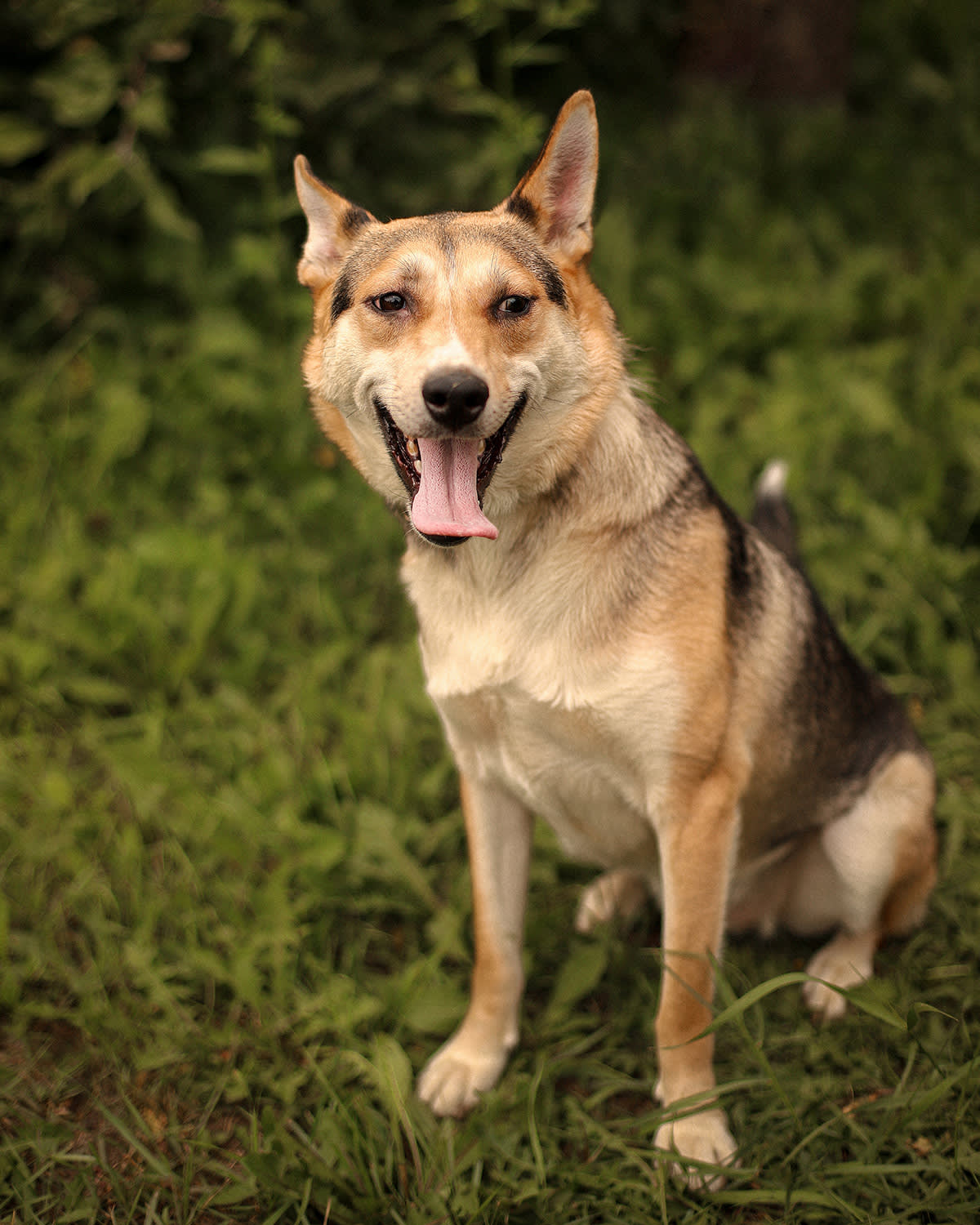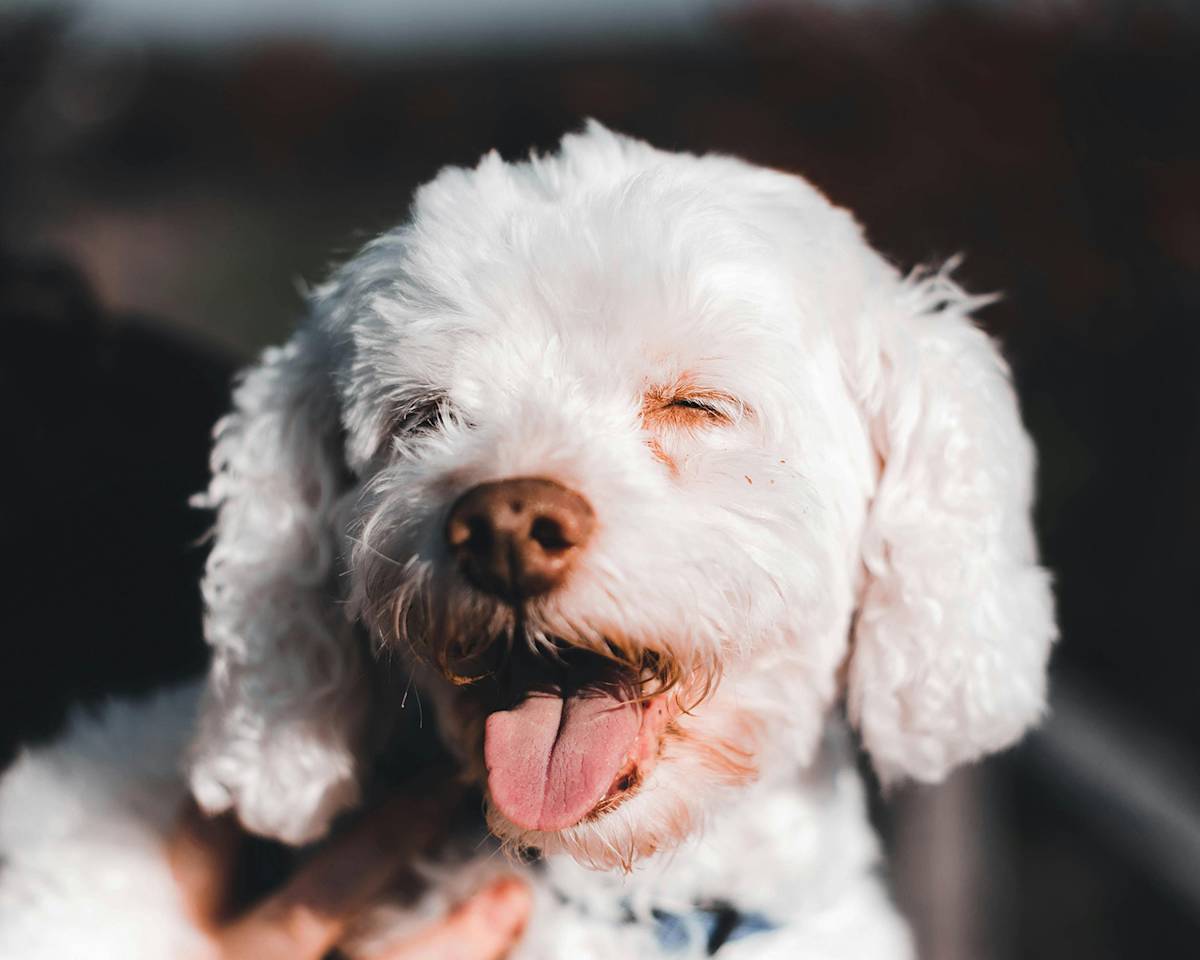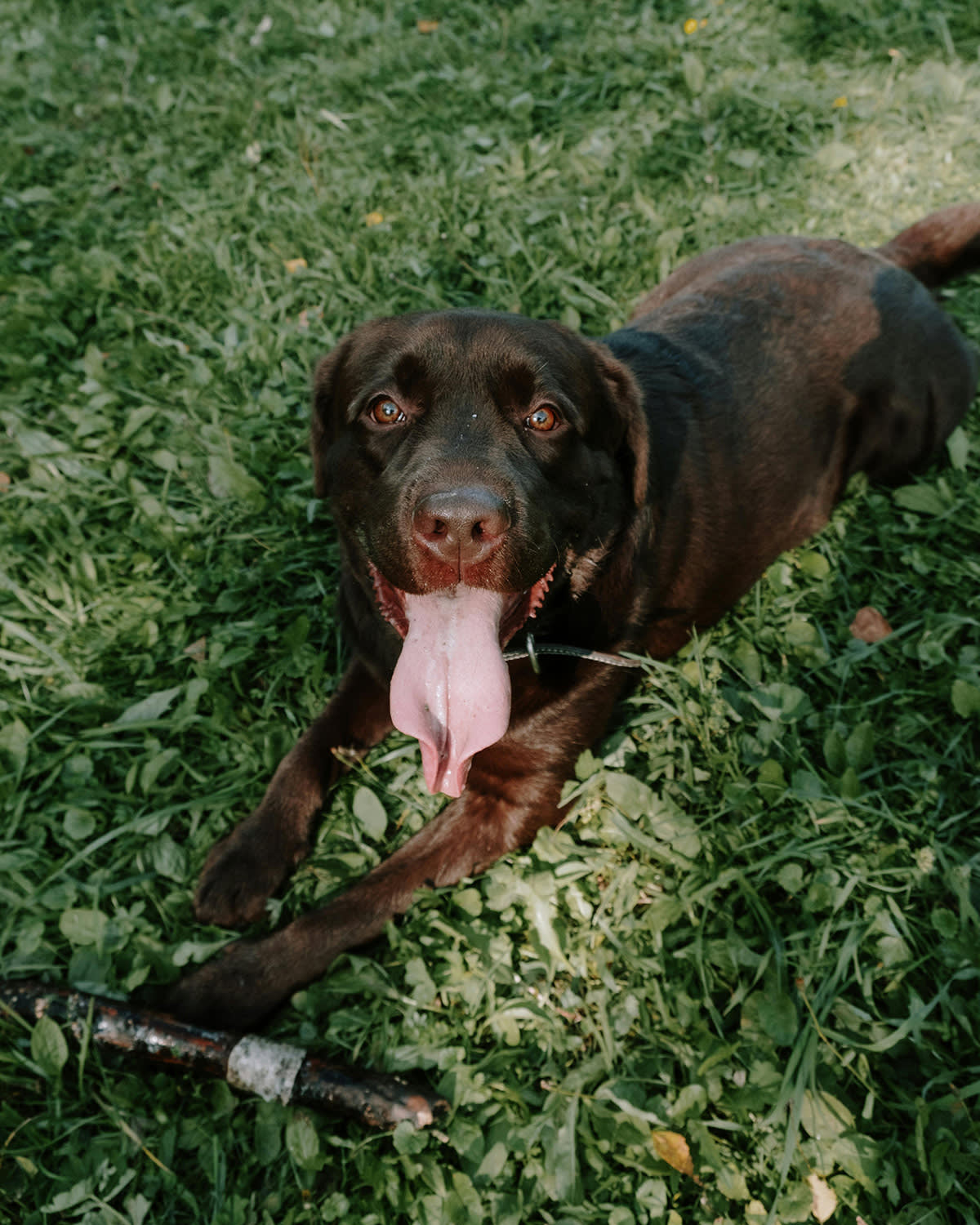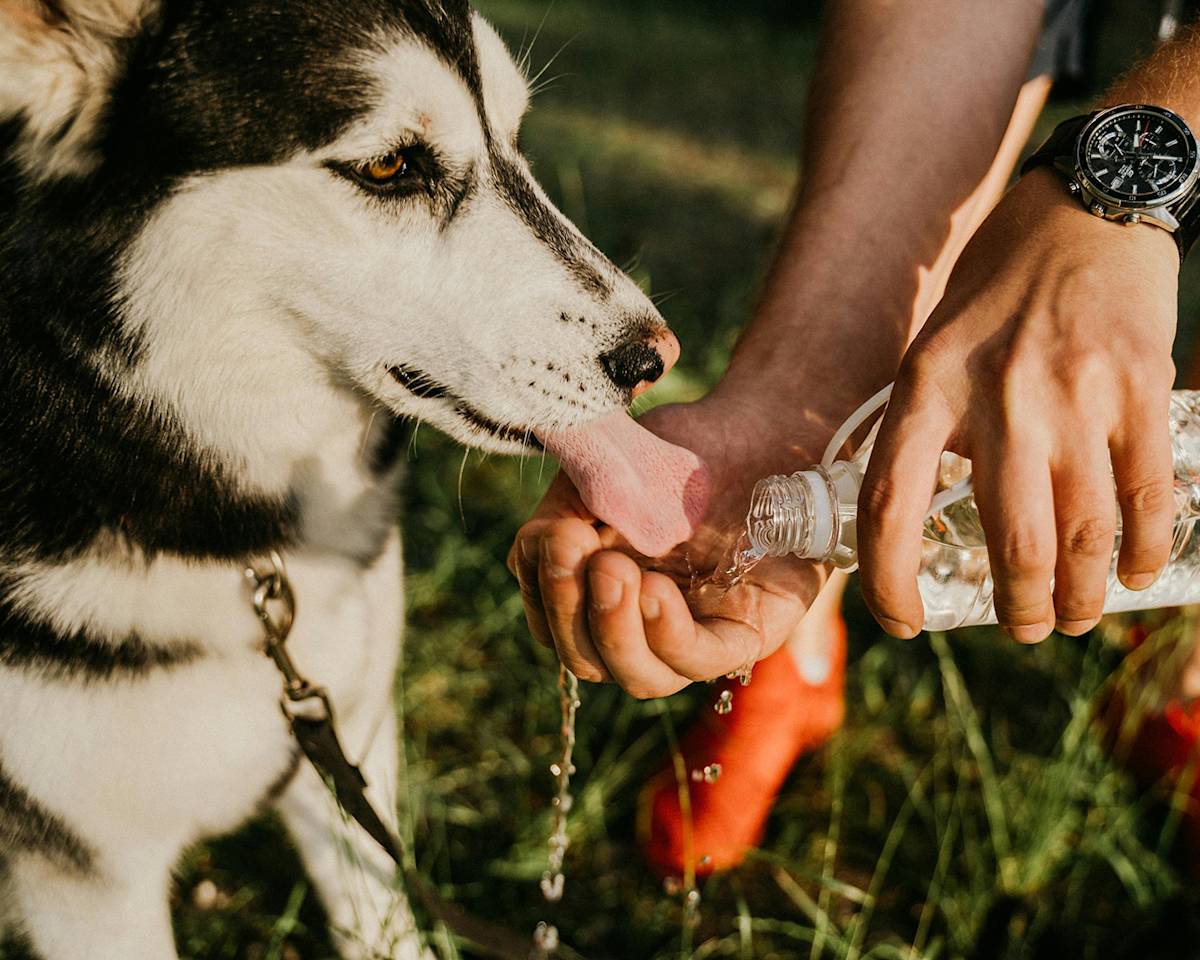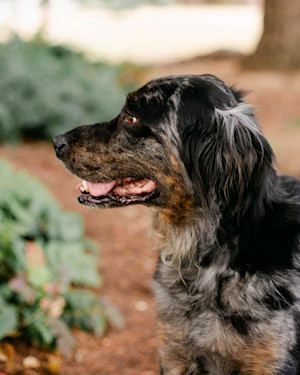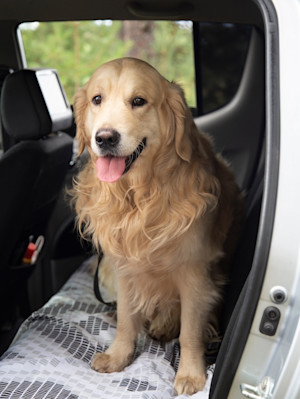This Simple Tongue Trick Could Save Your Dog’s Life This Summer
Your pup’s tongue is sending you important temperature signals
Your dog’s tongue isn’t just adorable when it’s hanging out during a happy walk. It’s actually a sophisticated cooling system that changes shape to tell you exactly how hot they’re feeling. Think of your dog’s tongue as nature’s most adorable thermometer – it’s not just cute, it’s actually an early warning system telling you exactly how their internal temperature is doing.
This fascinating fact recently went viral on Instagramopens in new tab, where a post showed dogs’ tongues literally transforming into spade shapes when they’re overheating. What seemed like a random observation is actually spot-on science – and it could save your pup’s life.
Let��’s decode what your dog is trying to tell you through their panting – and most importantly, when they need your help to cool down.
The science behind your dog’s shape-shifting tongue
If you’ve ever wondered why your pup doesn’t get sweaty like you do during a workout, here’s the straightforward answer: dogs rely on panting as their main cooling system. While they do have some sweat glands in their paws, they’ve evolved to lose heat through their mouth instead of their skin.
When your dog pants, they’re not just trying to get more oxygen (though that happens too). They’re actually running their personal air conditioning system. Panting increases their respiratory frequencyopens in new tab (breathing rate) but reduces tidal volume, (the amount of air they take in with each breath), which creates the perfect conditions for heat exchange.
Here’s how it works: your dog breathes in cooler, dry air and breathes out warm, humid air. As this air flows over the wet surfaces of their tongue, throat and nasal passages, heat escapes through evaporation. The faster this happens, the quicker they cool down – hence the rapid panting you see.
Your dog has three different breathing mechanismsopens in new tab they can use:
In and out through just their nose (when they’re comfortable).
In through the nose, out through both nose and mouth (warming up).
In and out through both nose and mouth (actively cooling down).
Now here’s where it gets really clever: when your dog needs to cool down faster, their tongue actually changes shape to create more surface area for heat to escape. The hotter they feel, the more their tongue flattens and elongates into that distinctive spatula or spade shape. You might even notice extra drooling – that’s your pup producing more saliva to boost the cooling effect.
As either exercise or environmental heat increases the need to regulate body temperature also increases, so your pup alters their breathing pattern to try to lose heat through evaporation.
This cooling method works by inhaling cooler dry air and exhaling warm humid air, as the air passes over the mucous membranes, i.e. the tongue, throat and nasal passage, water vapour and heat is exchanged through evaporation. The faster this occurs the quicker the cooldown, hence the panting.
How to read your dog’s heat status based on their tongue
Now we know why and how they pant, how can we tell when they’re feeling too hot and need our help to cool down.
Normal panting
Your dog may have their mouth open and pant with their tongue inside their mouth when resting or exercising happily, it is very common to see them trotting along with an open, relaxed ’smile’, panting a little as they go, but this stops once resting. This is one content pup. Carry on!
Warming up, but still happy
They may start to pant with their tongue out once working a bit harder, or temperatures around them increase. The tongue should appear loose and relaxed, along with a content facial expression with no tight muscles. When your pup is in this happy thermoregulation status, they can stop panting if distracted by something or if the exercise stops. You can see them happily sniff the air and appear interested in the world around them. This is A-OK, just monitor for now.
Starting to feel the heat – pay attention
This is where things change, and it’s crucial to recognize the signs. As your dog’s body gets hotter through exercise or environmental heat, their relaxed composure shifts. Their tongue starts extending further out, elongating into that spatula shape at the tip we mentioned earlier.
If they are finding it difficult to thermoregulate themselves their expression becomes pinched and tight, with cheeks retracting back at the sides. This expression may confuse some, as while this can look like a happy content ‘smile’, we need to take the rest of their body language into account to make sure they are not struggling with overheating.
Here’s what to watch for: if your dog is struggling to cool themselves down, their facial expression becomes pinched and tight, with their cheeks pulling back at the sides. This might look like a happy ‘smile’ at first glance, but look closer at the rest of their body language.
Warning signs your dog needs help cooling down:
An almost human-like worried expression with ‘raised eyebrows’.
Ears positioned back on their head.
Distractions don’t stop their panting.
They lie down and spread themselves out to get more contact with cool ground.
Excessive drooling.
Seeming anxious or restless.
Their skin, nose or paws feel warmer than usual to your touch.
If you see these signs, stop any exercise immediately and help your dog cool down. Move them to a cooler area, offer fresh water and let them rest somewhere comfortable and cool.
Emergency overheating territory – your dog needs help ASAP
Once your dog’s body can’t regulate temperature effectively anymore, their internal temperature rises above 41.1C (106F). This is dangerous territory that can lead to collapse, seizures, internal bleeding, organ failure, coma and even death in some extreme cases.
Signs your dog needs urgent veterinary care:
Excessive panting with a pronounced ’ladle; or spoon-shaped tongue and continuous thick drooling, combined with a worried expression.
Collapse, wobbliness when walking or inability to stand up.
Lethargy and complete disinterest in their surroundings.
Gums that feel sticky and/or appear darker than normal.
Red dot rashes appear on their skin.
Panting that stops abruptly (this could mean they’re losing consciousness or having a seizure).
A complete guide to your dog’s tongue health
While we’re talking about tongues, let’s cover what else this amazing muscle can tell you about your dog’s overall health; it does a whole lot for the body, not just helping with devouring their food at every meal. This anatomical anomaly is a muscle that is only attached to the body at one end, making it incredibly versatile. It helps them lap up water, regulate body temperature, chew food, taste through their taste buds, and of course, bark out their daily demands.
A healthy tongue is pink, uniform in texture, shape and colour. A pale or blue-tinged tongue can indicate anaemia or circulation problems (unless you have a Chow Chow – they’re famous for their natural blue-black tongues!).
Many dogs have harmless black spots on their tongues or gums that are flat and appear in patches. These are completely normal. However, if you notice spots appearing suddenly, or if they seem raised or irregular, it’s worth getting them checked out, as this can sometimes indicate canine melanoma.
Preventing heat-stroke in dogs
We’ve all heard about the dangers of leaving dogs in hot cars, but here’s something that might surprise you: exerciseopens in new tab is actually the most common trigger for heat-stroke in dogs. Heat-stroke from exercise, especially in warm weather, is just as deadly as heat-stroke from being trapped in a hot car.
With rising temperatures and climate change making summers more intense, recognising early heat-related illness signs is crucial for keeping our dogs safe.
Treatment for heat-stroke
If you spot signs of heat-related illness, remember the simple phrase: “Wet, then vet!”
Wet your pet with any water cooler than their body to start to reduce their internal temperature. A hose works well, but spraying groin, belly, neck and paws with a water bottle works well too. Then call your vet for your next steps.
Here’s why starting treatment at home matters: one study showed a staggering 49 percent death rate for dogs not cooled before transport to the vet, versus only 19 percent mortality when pet parents started cooling measures before the trip.
Should you use ice cold water on your dog?
There have been new studies related to using ice cold water – we have previously been taught to not use this for heat-stroke due to the risk of causing shock and vasoconstriction. This evidenceopens in new tab has been updated to show there is low risk for younger, otherwise healthy individuals and the benefit over risk shows to use what you have available to you.
If you see the signs of severe heat-stroke and all you have is cold water, use it. It may be a life saving measure.
Further treatment
Treatment doesn’t stop there, call your vet as soon as possible as further treatment for internal issues may be needed. On your way or while waiting make sure to:
Keep wetting them and provide airflow with a fan or open car windows.
Don’t wrap them in wet towels (this can trap heat), instead wet then cool with air.
Offer water to drink, but never force it.
Get to your vet as soon as possible for additional treatment, even if they ‘seem’ OK.
Special considerations for flat-faced breeds
Brachycephalic breeds (dogs with flat faces such as Bulldogs, Pugs and Boston Terriers) are particularly vulnerable to heat-related illnesses. If you have one of these breeds, watch extra carefully for any of the warning signs we’ve discussed. At the first sign of trouble, move them to a cool, shaded area and start treatment immediately.
Remember, when in doubt, contact your veterinarian. It’s always better to be cautious when it comes to your dog’s safety.
By understanding your dog’s built-in temperature warning system, you can help ensure many more happy, safe summers together.
References
Drobatz, Kenneth J., and Douglass K. Macintire. “Heat-Induced Illness in Dogs: 42 Cases (1976-1993).” Journal of the American Veterinary Medical Association, vol. 209, no. 11, 1996, pp. 1894-1899.
Gaudio, Flavio G., and Colin K. Grissom. “Cooling Methods in Heat Stroke.opens in new tab” The Journal of Emergency Medicine, vol. 50, no. 4, Apr. 2016, pp. 607-616.
Goldberg, Marcia B., et al. “Panting in Dogs: Paths of Air Flow in Response to Heat and Exercise.opens in new tab” Respiration Physiology, vol. 43, no. 3, Mar. 1981, pp. 327-338.
Hall, Emily, et al. “Dogs Don’t Die Just in Hot Cars—Exertional Heat-Related Illness (Heatstroke) Is a Greater Threat to UK Dogs.opens in new tab” Animals, vol. 10, no. 8, July 2020, p. 1324,
“New Research from the RVC Suggests Human Heat-Health Alerts Could Help Prevent Heatstroke in Dogs.opens in new tab” Royal Veterinary College, 2024,
Robertshaw, David. “Mechanisms for the Control of Respiratory Evaporative Heat Loss in Panting Animals.opens in new tab” Journal of Applied Physiology, vol. 101, no. 2, May 2006, pp. 664-668,
Veterinary Voices UK. “Cool, Icy, Cold or Tepid? What’s Best for Heat Stroke?opens in new tab” Veterinary Voices UK, 26 June 2024..
